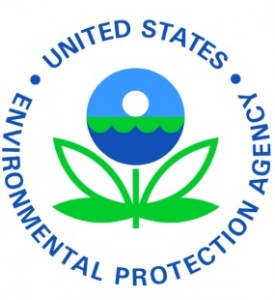Toxic Substances Control Act (TSCA) Reform Landing Page
This page provides an overview of how EPA conducts risk evaluations for chemicals under the Toxic Substances Control Act (TSCA), as amended by the Frank R. Lautenberg Chemical Safety for the 21st Century Act, the status of EPA’s ongoing risk evaluations and other assessment-related activities and documents.
June 22, 2017 — Scopes of the Risk Evaluations to be Conducted for the First Ten Chemical Substances under the Toxic Substances Control Act; Notice of Availability — Signed by EPA Administrator Scott Pruitt
June 22, 2017 — Procedures for Prioritization of Chemicals for Risk Evaluation Under the Toxic Substances Control Act
June 22, 2017 — Procedures for Chemical Risk Evaluation Under the Amended Toxic Substances Control Act
June 22, 2017 — Scope of the Risk Evaluation for Asbestos
Chemical Watch News reported:
Three final framework rules under the new TSCA – on prioritisation, risk evaluation and the inventory reset – as well as scoping documents for the first ten substances subject to risk evaluation, were issued by the US EPA today as Chemical Watch went to press.
In response to public comment, the EPA has made several modifications. These include:
- deleting the pre-prioritisation process, with plans to defer a decision on these provisions following further stakeholder dialogue;
- increasing public participation in identifying candidates for prioritisation, indicating a tiered approach to information gathering when filling data gaps, and striking provisions for a ‘default’ to a high-priority designation;
- not requiring all conditions of use to be considered in a risk evaluation, to “[ensure] that the agency’s resources are focused on those uses that may pose the greatest risk”; and
- more clearly defining “important scientific terms” in its risk evaluation rule, while “retaining flexibility to allow for new scientific approaches to be incorporated as they are developed”.
The agency also made efforts to “streamline” the inventory reset reporting requirements. Modifications include:
- expanding exemptions from retrospective reporting;
- removing the proposed requirements to report commercial activity type and date range;
- adding a 90-day transition period before a substance is officially designated as inactive; and
- extending to 420 days the period during which processors may optionally report.
Press Release: EPA Marks Chemical Safety Milestone on 1st Anniversary of Lautenberg Chemical Safety Act
Agency Meeting Statutory Responsibilities and Deadlines
WASHINGTON – (June 22, 2017) Today, on the one-year anniversary of the Frank R. Lautenberg Chemical Safety for the 21st Century Act, Administrator Scott Pruitt announced that EPA has met its first-year statutory responsibilities under the law. This includes issuing three new rules, providing a guidance document for external parties, and releasing the scoping documents for the first 10 risk evaluations that will be conducted. “The activities we are announcing today demonstrate this Administration’s commitment to providing regulatory certainty to American businesses, while protecting human health and the environment,”said Administrator Pruitt. “The new process for evaluating existing chemicals outlined in these rules will increase public confidence in chemical safety without stifling innovation.”
Press Release: EPA Administrator Scott Pruitt signs new TSCA rules surrounded by staff from EPA’s Office of Chemical Safety and Pollution Prevention.
The Act amends the nation’s primary chemicals management law known as the Toxic Substances Control Act (TSCA). The legislation received bipartisan support in the U.S. House of Representatives and the Senate, and provides significant new responsibilities and authorities to EPA to advance chemical safety. EPA has completed the following implementation activities at this one-year anniversary:
· Finalized a rule to establish EPA’s process and criteria for identifying high priority chemicals for risk evaluation and low priority chemicals for which risk evaluation is not needed. In response to public comments, this final rule affirms EPA’s commitment to following the best available science, engaging stakeholders in the prioritization process, and recognizing the value of designating chemicals as low priority when appropriate. Read more: http://www.epa.gov/assessing-and-managing-chemicals-under-tsca/prioritizing-existing-chemicals-risk-evaluation
· Finalized a rule to establish EPA’s process for evaluating high priority chemicals to determine whether or not they present an unreasonable risk to health or the environment. In response to public comments, this final rule clearly defines important scientific terms to ensure transparency and confidence in the risk evaluation process while retaining flexibility to allow for new scientific approaches to be incorporated as they are developed. Additionally, the final rule clarifies EPA’s authority to determine what uses of a chemical are appropriate for risk evaluation, ensuring that the Agency’s resources are focused on those uses that may pose the greatest risk. Read more: https://www.epa.gov/assessing-and-managing-chemicals-under-tsca/risk-evaluations-chemicals-under-tsca
· Finalized a rule to require industry reporting of chemicals manufactured or processed in the U.S. over the past 10 years. This reporting will be used to identify which chemical substances on the TSCA Inventory are active in U.S. commerce and will help inform the chemicals EPA prioritizes for risk evaluation. In response to public comments, EPA streamlined the reporting requirements for manufacturers and processors in the final rule to help reduce regulatory burden. Read more: https://www.epa.gov/tsca-inventory/tsca-inventory-notification-active-inactive-rule
· Released scope documents for the initial ten chemicals for risk evaluation under the amended law. These documents identify what uses of the chemicals will be evaluated and how the evaluation will be conducted. Read more: https://www.epa.gov/assessing-and-managing-chemicals-under-tsca/risk-evaluations-chemicals-under-tsca#ten
· Released guidance for external parties interested in submitting draft risk evaluations to the EPA for consideration. Read more: https://www.epa.gov/assessing-and-managing-chemicals-under-tsca/guidance-assist-interested-persons-developing-and
This past year has been marked by many EPA accomplishments to implement the amended law. More information on EPA’s progress to date and a full list of all the TSCA implementation activities can be found here: https://www.epa.gov/assessing-and-managing-chemicals-under-tsca/frank-r-lautenberg-chemical-safety-21st-century-act-5

